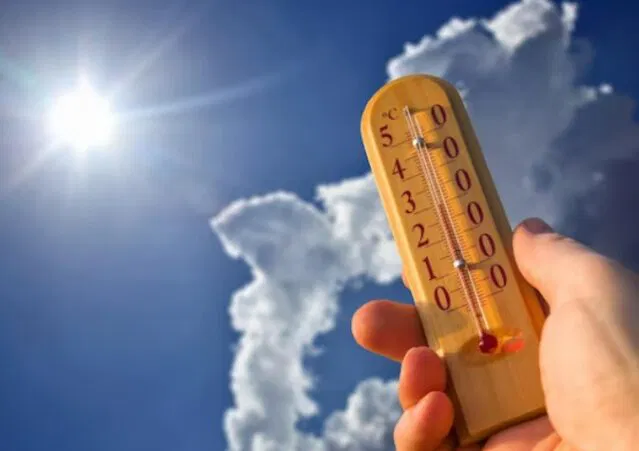
Bihar has been experiencing a significant change in its weather conditions in recent days. The minimum temperature in Patna has steadily dropped over the last five days, with a noticeable dip in temperatures. This sudden cold wave, intensified by the western winds, has increased the chill factor, making mornings and evenings feel much colder. Experts predict that this trend will continue, causing fog and air pollution to be a major concern in the coming days.
Temperature Drop and Cold Winds Affect Bihar
Over the last few days, the minimum temperature in Patna has seen a dramatic decline. On November 5, the temperature was recorded at 20.9°C, but by November 9, it had dropped to 18°C, with several districts reporting even lower temperatures. The cold spell has been further aggravated by strong westerly winds, which have contributed to the sharp drop in temperatures, making it feel colder during early mornings and evenings.
The weather department in Patna has indicated that these conditions are likely to persist. The upcoming four days are expected to see continued fog, which will make the chilly mornings more uncomfortable. As a result, people are advised to take extra precautions, especially while commuting early in the morning or late at night. The biting cold is expected to last until mid-November, and it’s crucial for residents to remain prepared for the winter chill.
Rising Air Pollution in Bihar
In addition to the drop in temperature, another issue that has emerged is the alarming rise in air pollution levels across the state. On Sunday, the air quality index (AQI) in Samnapura, Patna, surged to a hazardous level of 246. The PM 2.5 levels, which indicate fine particulate matter, were found to be well above the acceptable standards, causing concern about the health implications for residents. In fact, the average AQI in Patna remained at a high of 159, with areas like Patna City and Danapur experiencing even worse air quality levels, recorded at 101 and 178, respectively.
The severe air pollution can be attributed to several factors, including the ongoing construction work and improper road cleaning practices, which have allowed dust to accumulate and spread across the city. As a result, the air quality in Bihar has worsened considerably in the past few days, and experts suggest that this will continue until the winter season subsides.
Cold Weather and Its Impact on Visibility
Another issue caused by the current weather conditions is poor visibility, especially in the early mornings. On Sunday, the visibility in Purnia, one of Bihar’s northeastern districts, dropped to just 1,000 meters due to dense fog. This low visibility has created dangerous conditions for commuters, particularly those traveling by road. Fog is expected to persist in the coming days, further disrupting daily life and causing challenges for motorists. Authorities are urging people to drive cautiously and take appropriate safety measures during such conditions.
Dry Weather Expected to Continue in Bihar
Looking ahead, weather experts have forecast that the state will experience dry weather for the next few days. There is little to no chance of rainfall, which means that the dry conditions will contribute to further dust accumulation. As a result, air quality is expected to remain poor, especially in urban areas like Patna. The extended dry spell, coupled with low temperatures, will contribute to a prolonged winter-like atmosphere throughout the region. This is particularly concerning for residents who are already dealing with the adverse effects of pollution.
Health Risks from Poor Air Quality
One of the most alarming aspects of the current weather is the deteriorating air quality, which is posing a serious risk to public health. The high AQI levels are indicative of a significant presence of pollutants in the air, which can lead to respiratory issues, especially for children, the elderly, and those with pre-existing health conditions. The high levels of particulate matter, such as PM 2.5, can cause serious long-term health effects, including respiratory infections, asthma, and cardiovascular problems. The combination of cold weather and air pollution creates a hazardous situation that people need to be mindful of.
Authorities Urged to Take Action
Experts have also pointed out that this period of severe pollution is likely to persist throughout the winter months, from November to February. The combination of fog, dry weather, and dust will continue to exacerbate the pollution problem. To mitigate these effects, authorities have recommended several measures, such as increased water spraying on roads and better street cleaning efforts. These measures can help reduce the amount of dust and particulate matter in the air, which would, in turn, improve the overall air quality.
The Central Pollution Control Board (CPCB) has called for immediate action to address the ongoing pollution crisis. If the air quality continues to worsen, the AQI may soon exceed the 200 mark, which would place the region in the “very poor” category, making the situation even more dangerous for residents.
Preparing for the Cold and Pollution
As Bihar braces for the colder days ahead, it is crucial for residents to take preventive measures to protect themselves from the impact of both the cold weather and poor air quality. Health experts recommend wearing warm clothing, covering the face to prevent inhaling harmful particles, and limiting outdoor activities during times of high pollution. If possible, staying indoors with air purifiers can help mitigate exposure to toxic air.
In conclusion, Bihar is experiencing a severe drop in temperatures, with cold waves affecting Patna and other districts. Alongside the drop in temperature, the state is grappling with poor air quality levels, which are worsening due to ongoing construction activities and dry weather. As fog continues to affect visibility, commuters are advised to exercise caution. The authorities must take swift action to improve the situation and protect public health, particularly as the state moves further into the winter season.


